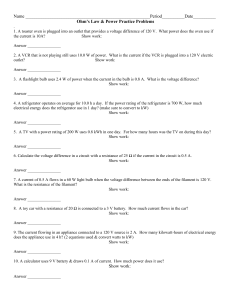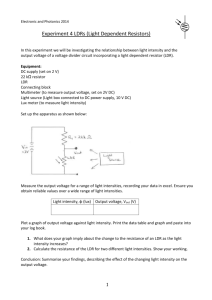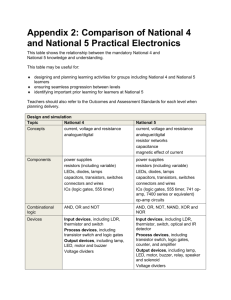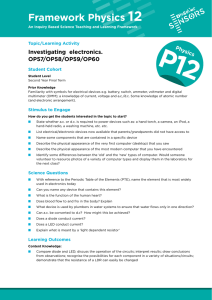P2 5.3 More about current and Potential difference graphs
advertisement
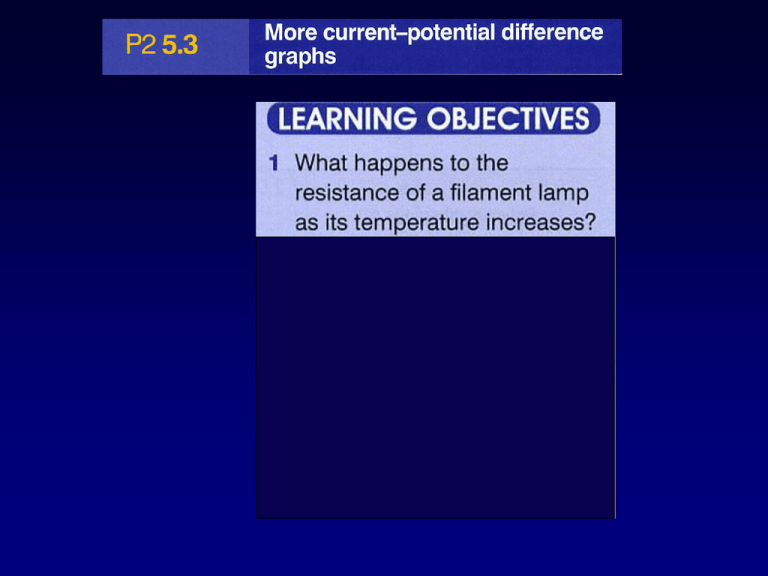
Current-Voltage Characteristics of a bulb In this experiment you are going to investigate how the current through a bulb changes according to the voltage across it. Current (amp) V 0.00 Voltage (Volt) 0.00 A To get negative currents and voltages, use reverse polarity on the battery pack A graph of the results should look like this Current(A) BULB -4 *resistance increases 0.6 Voltage / V -6 Hot filament 0.8 Current /A 0.4 *current does not increase in proportion to voltage 0.2 *filament is non- ohmic 0 -2 0 2 4 6 -0.2 Cold filament -0.4 *constant resistance -0.6 *current is directly proportional to voltage. -0.8 voltage (V) *The metal filament inside the bulb follows ohms law In the forward direction the line curves towards the current axis. 3 DIODE 2.5 Current (A) 2 (What is happening to the resistance?) 1.5 1.2 Diodes are non- ohmic conductors 1 0.5 0 -4 -3 -2 -1 0 1 voltage (V) 2 In the reverse direction, current flow is very, very low. Is the resistance of the diode high or low? 3 4 What is the resistance of the diode when the voltage is 2V? R=V/I R = 2 V / 1.2 A R = 1.7 Ω Thermistor A thermistor’s resistance decreases as the temperature rises. USE: temperature sensor, fire alarm Light dependent resistor (ldr) An LDR’s resistance decreases as the amount of light falling on it increases. USE: street lights What do the current-voltage graphs look like for a thermistor and an LDR? thermistor Current (A) High temperature Low temperature The line is straight so the resistance is constant for a set temperature. But at lower temperatures the resistance is higher (so the current is lower) Voltage (V) Current (A) LDR Bright light The line is straight so the resistance is constant for a set light level. Dim light But at lower light levels the resistance is higher (so the current is lower) Voltage (V)
